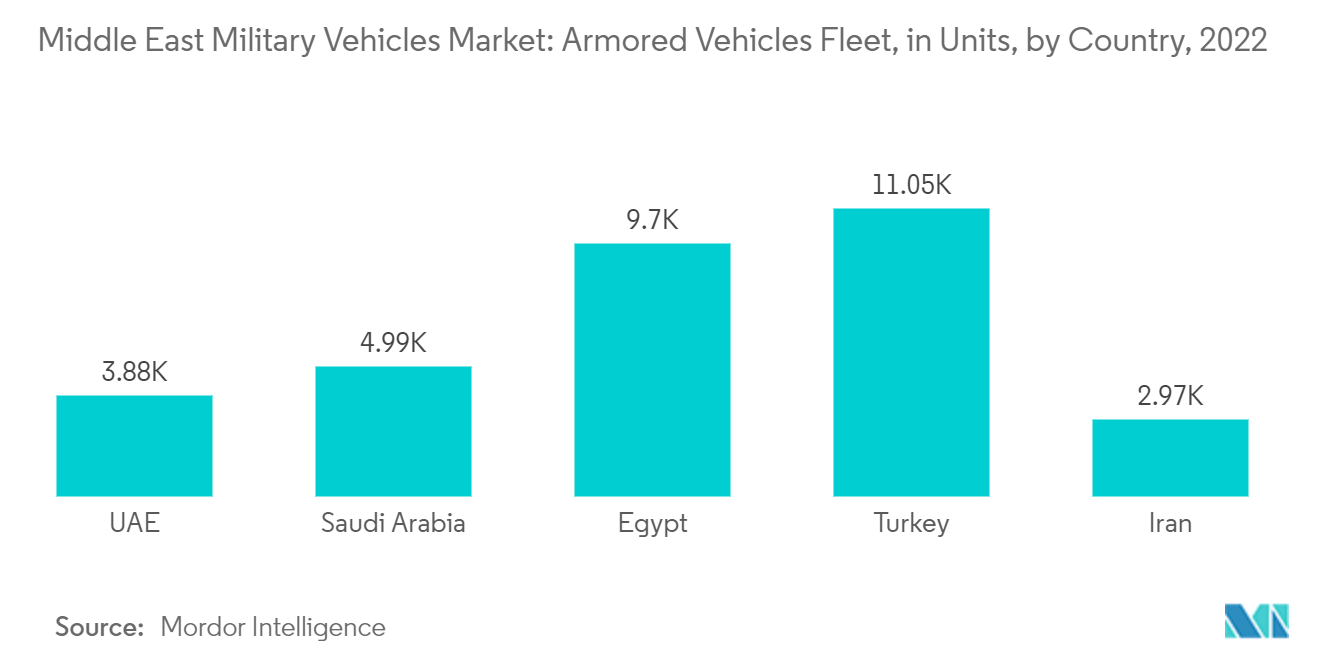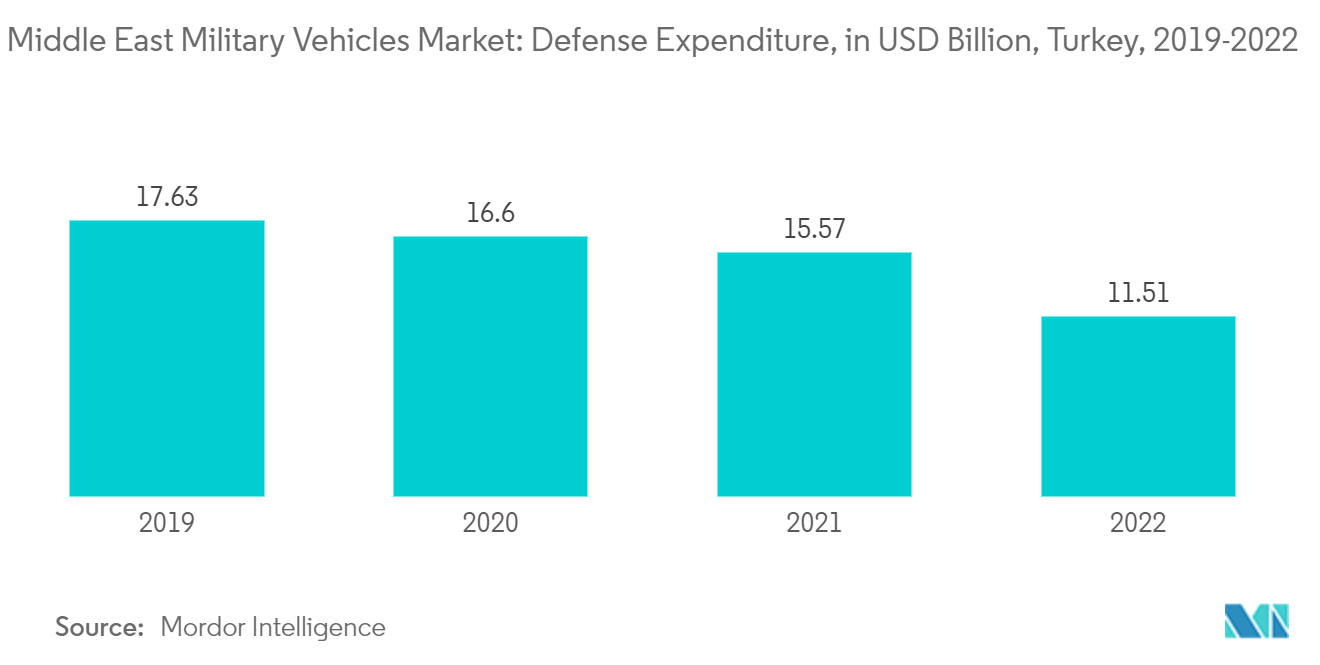Market Trends of Middle East Military Vehicles Industry
Armored Vehicles Segment to Witness Highest Growth During the Forecast Period
Over the past few years, the military equipment procurement of the region increased at a rapid pace, due to the conflicts in Yemen, Libya, and Somalia and the Sinai insurgency.
UAE plans to modernize all units of the UAE armed forces with new and advanced military equipment to continue developing capabilities. For instance, in February 2023, Nexter, the leading French land defense company, signed a teaming agreement with International Golden Group, the leading supplier of the UAE Armed forces, to prepare for the modernisation of the UAE Army’s Leclerc main battle tank (MBT).
The UAE also intends to utilize the MRAP vehicles to increase force protection, conduct humanitarian assistance operations, and protect critical infrastructure. In February 2023, the first batch of 400 Rabdan 8x8 infantry fighting vehicles (IFVs) was delivered to the UAE Army and manufacturer Otokar is hopeful that additional orders will be placed in the future.
Iran has a very large fleet of wheeled and sand-blasted armored vehicles that can be equipped to carry out missions such as fire support by making a series of modifications. For example, BTR 50 and 60 series and BMP 1 and 2 personnel carriers are among these armored vehicles. Such robust plans of the government of countries in Middle East to rapidly increase the fleet of armored vehicles are anticipated to propel the growth of the military vehicles market in the coming years.

Turkey to Dominate Market Share During the Forecast Period
Turkey has been significantly investing in its defense industry and expanding production. The recent focus on domestic design and production stems from an increase in potential threats from Russia and various militant groups and from sanctions placed on Turkey's defense industry by its NATO allies. In this context, in May 2023, Turkey’s FNSS Defence Systems was contracted to provide capability enhancement to the Turkish Army’s ACV-15 advanced armored personnel carriers (AAPCs). The agreement was signed to boost the vehicle’s performance and extend its service life for an additional 20 years. According to the company, an undisclosed number of AAPCs will be fitted with modern subsystems to support more missions and help address sophisticated threats on the battlefield.
Turkey’s procurement and defense authorities have launched a program designed to increase the structural life of the country’s existing fleet of F-16 Block 30 jets from 8,000 flight hours to 12,000. The upgrades may cover 1,200 to 1,500 parts per aircraft.
In addition, Turkey has vastly advanced in armored vehicle manufacturing and is acquiring new vehicles to modernize its fleet and with its interest in upgrading its naval fleet to further contribute to the growth of the market. For instance, in April 2023, the Turkish Navy received its largest vessel, the amphibious assault ship TCG Anadolu which is Turkey’s first landing platform dock. The military will deploy heavy helicopters, drones and light-attack aircraft from the vessel.

